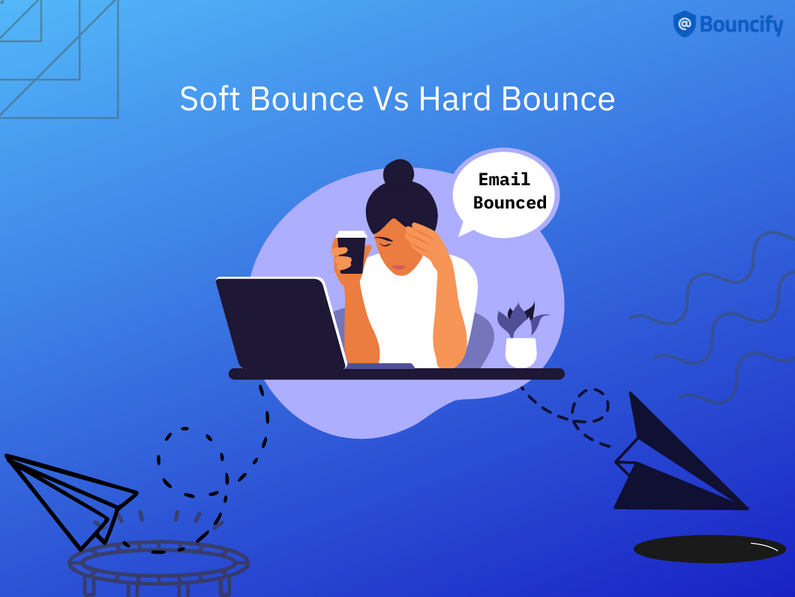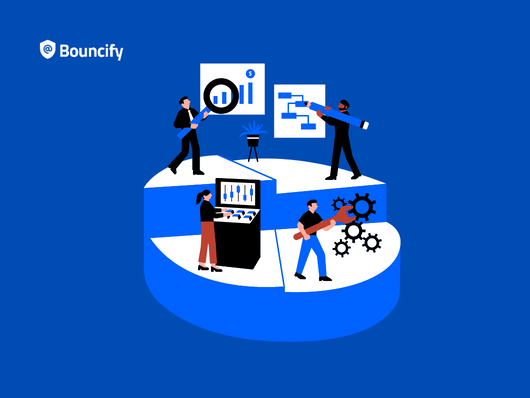Hard Bounce vs Soft Bounce

Email campaigns need to reach the inboxes for subscriber engagement and email marketing performance. It is worth investigating if it is possible.
A bounce occurs when an email is not sent to the recipient's email server. This can be a nightmare for email marketers/businesses because it reduces deliverability and campaign effectiveness.
A bounce can be caused by several reasons, such as an incorrect email address or a problem on the recipient's server. Based on the reason for bounces, it is further divided into two categories: Hard Bounce and Soft Bounce.
Read more about the difference between soft and hard-bounced emails, where to find bounce information for your email marketing campaigns, and what to do with it.
What is a soft bounce?
Soft bounces are temporary bounces. The current message was not delivered, but we may be able to deliver another email to this address later. Soft bounces can be caused by the following issues:
· Too many people have marked your email as spam.
· You are blacklisted
· The recipient’s mailbox is full
· Your email account has been suspended
· Unexpected error or failure on the incoming mail server
How to deal with a soft bounce?
Soft bounces usually go away on their own, so you do not need to take immediate action, but you should monitor them carefully.
Remove the email from the list after 3 bounces
Understand the intervals in which these bounces occur.
For example, was it the passage of a day or a week? Ask your ESP what they do with soft bounces. Do they try to automatically resend your message? When and how often before they give up? At what point do soft bounces convert to undeliverable email addresses on the suppression list?
What is a hard bounce?
A hard bounce is a permanent bounce. This means that you will not receive any emails from that email address. This may be the result of an unknown user error that occurs when your email address is:
A. Invalid because it does not exist or has a typo (e.g., @gmial.com instead of @gmail.com)
B. When someone leaves the company or abandons a free email account,
Email delivery blocked
How to deal with hard bounces?
Proactively managing hard bounces is an important step in cleaning up your mailing list.
Review specific ESP practices for hard bounces. Most email service providers (ESPs) will do this, but check how they handle this process. Are common typos in email addresses automatically corrected? How many hard bounces does ESP mark an email address as undeliverable, and what types of hard bounces?
Follow best practices for manual removal. As part of your email list hygiene, we recommend disabling hard bounce emails or adding them to your suppression list. This eliminates the possibility of accidentally sending emails to email addresses that are known to be difficult to bounce.
Know where to find bounce information in ESP
Finding soft and hard bounce mail information varies by ESP, but bounce rate metrics are typically available in individual mailing reports, along with the rest of the delivery date. For example, you may see:
ESP Hard Bounce and Soft Bounce email data
From there, you can examine soft bounces or hard bounces to see a complete list of all recipients and their bounce codes. This is the data you need to start managing your list.

Actively manage your mailing list
If you get either a hard bounce or a soft bounce, it means it's time to roll up your sleeves and dig down the list. By repeatedly sending emails to a hard bounce address, your Internet Service Provider (ISP) can signal that your list is not sanitized properly.
We recommend checking your bounce stats at least weekly. Depending on the size and scope of your email marketing program, you may need to check more frequently or even more frequently during peak times.
Data quality is a key metric for his ISP in determining whether an email is spam and can affect your reputation as a sender.
Proactively managing your list helps with email deliverability as well as engagement. Sending to a cleaner list increases your chances of getting your email and sending it to people you want to engage with. This is a win-win situation.
Click to know more about Email Bounce in our previous article.